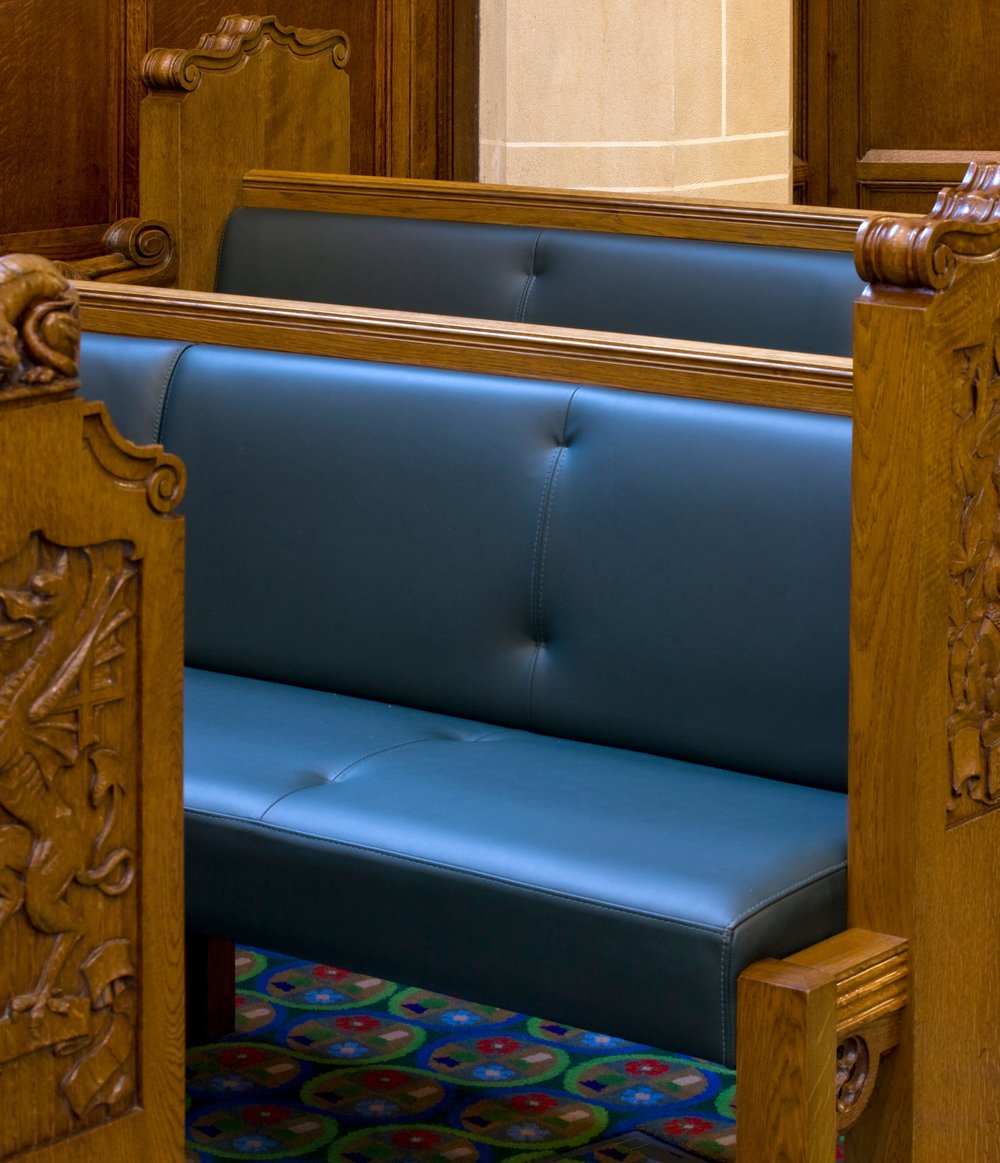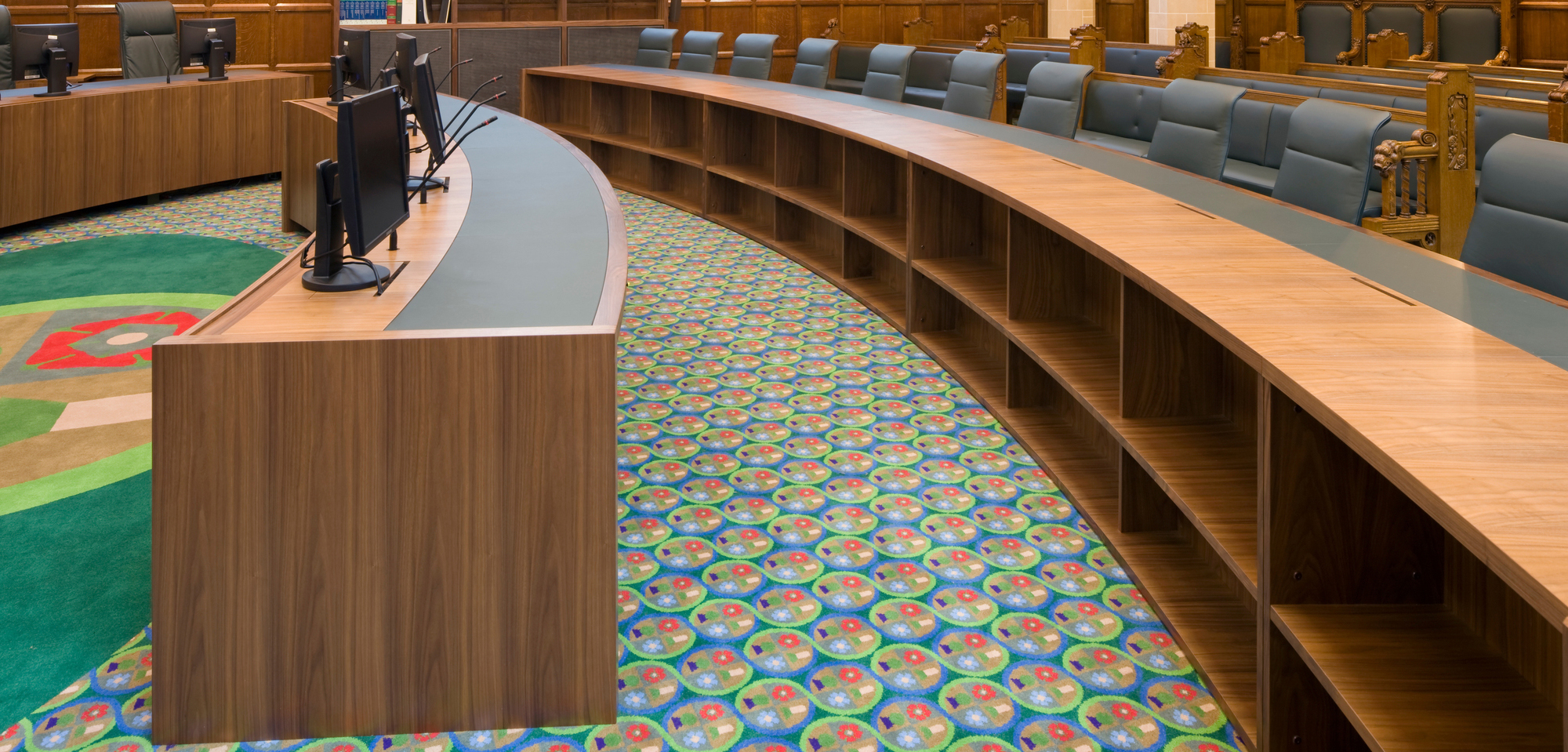The challenge for the conservation architects, Feilden & Mawson, was how to give this building another hundred-year life expectancy and turn it into a viable modern space.
One of the main differences between an appellate and a criminal court is the collegiate nature of the legal debate - the trials are not adversarial, revolving on interpretations of the law rather than the presentation and disputation of evidence. This makes a huge difference to the relationship between the justices and the advocates. How this is handled ultimately comes down to the design of the furniture.
The court furniture was developed with designer Tomoko Azumi. We opted for a visually austere approach for the ‘working’ furniture to stand in contrast to the elaborately decorated historic building. Challenges lay in increasing access for both the public and the press, as well as enabling the intellectual exchange to flow between the various protagonists without compromising the importance of eye-contact and audibility.
For more information:

Enjoy the article? Delve deeper into Luke Hughes & Company’s place in the Arts and Crafts tradition with the fascinating new book 'Furniture in Architecture' . Available through Thames & Hudson




